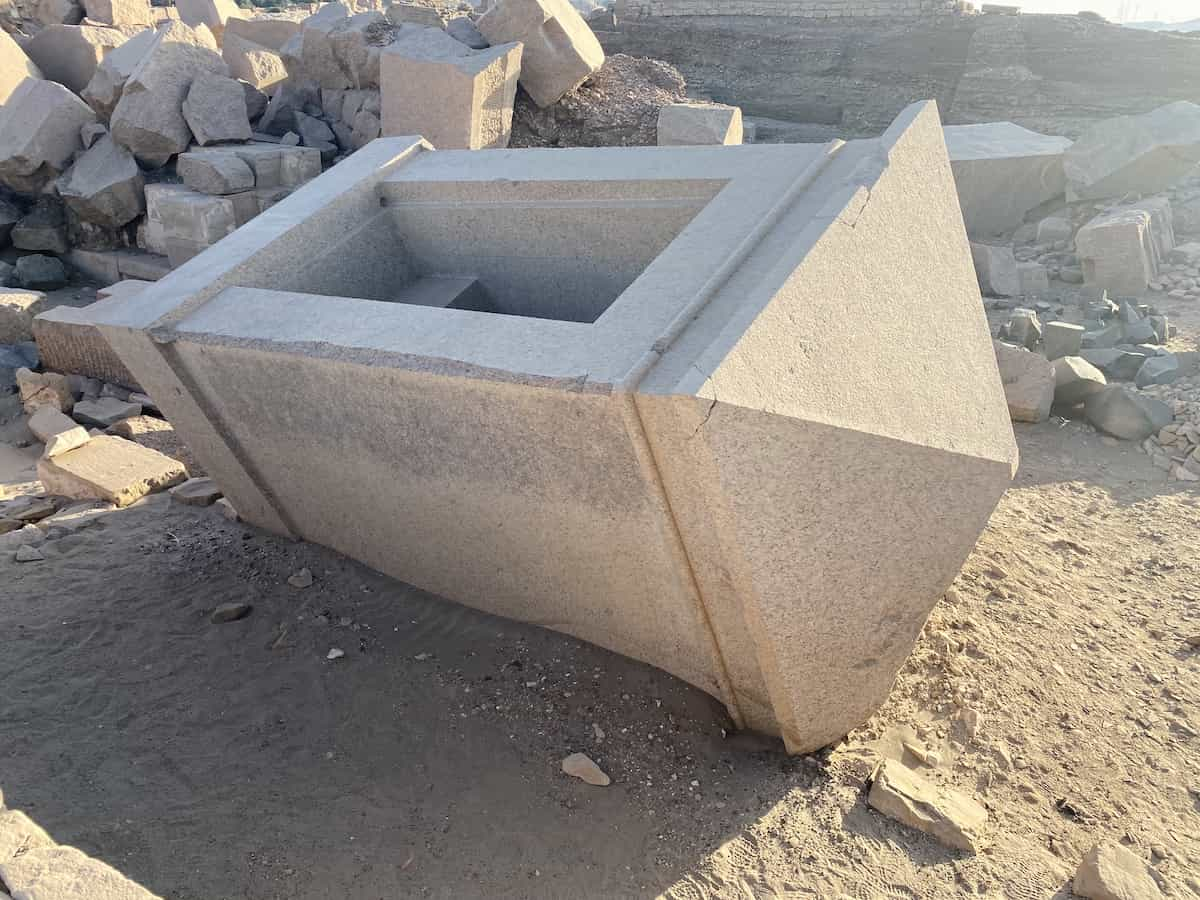Egyptians had quartz ... I asked about the Mohs scale ... if jasper is Mohs 7.5, and granite is Mohs 6.5 ... then we can use jasper to polish and cut right angles in granite ... or am I using this scale wrong ... you never said ...
I use carborundum for grinding, aluminum oxide for polishing ... just like telescope making ... yes, both are naturally rare and had to wait under the industrial age, and I believe all commercial products of these materials today are synthetic ...
Maybe we need a geologist to explain why the Egyptian quarries were full of diabase hammers ... {
Cite} ... see in the image how the block was hammered out of the granite matrix? ... makes smooth surfaces and right angles easy ...
And a correction, that citation above claims iron tools arrived in the 26th Dynasty ... the Great Pyramids of Giza were build in the 4th Dynasty ... whether Hittite wrought iron was available to these quarriers is beside the question ... what remains at the quarry site are stone hammers made of harder stone ...
"Conchoidally" --- I know that's a word but it still makes me roll with laughter ... "chips like a seashell" rather than along distinct planes of cleavage ... geologists can be such comedians ...




